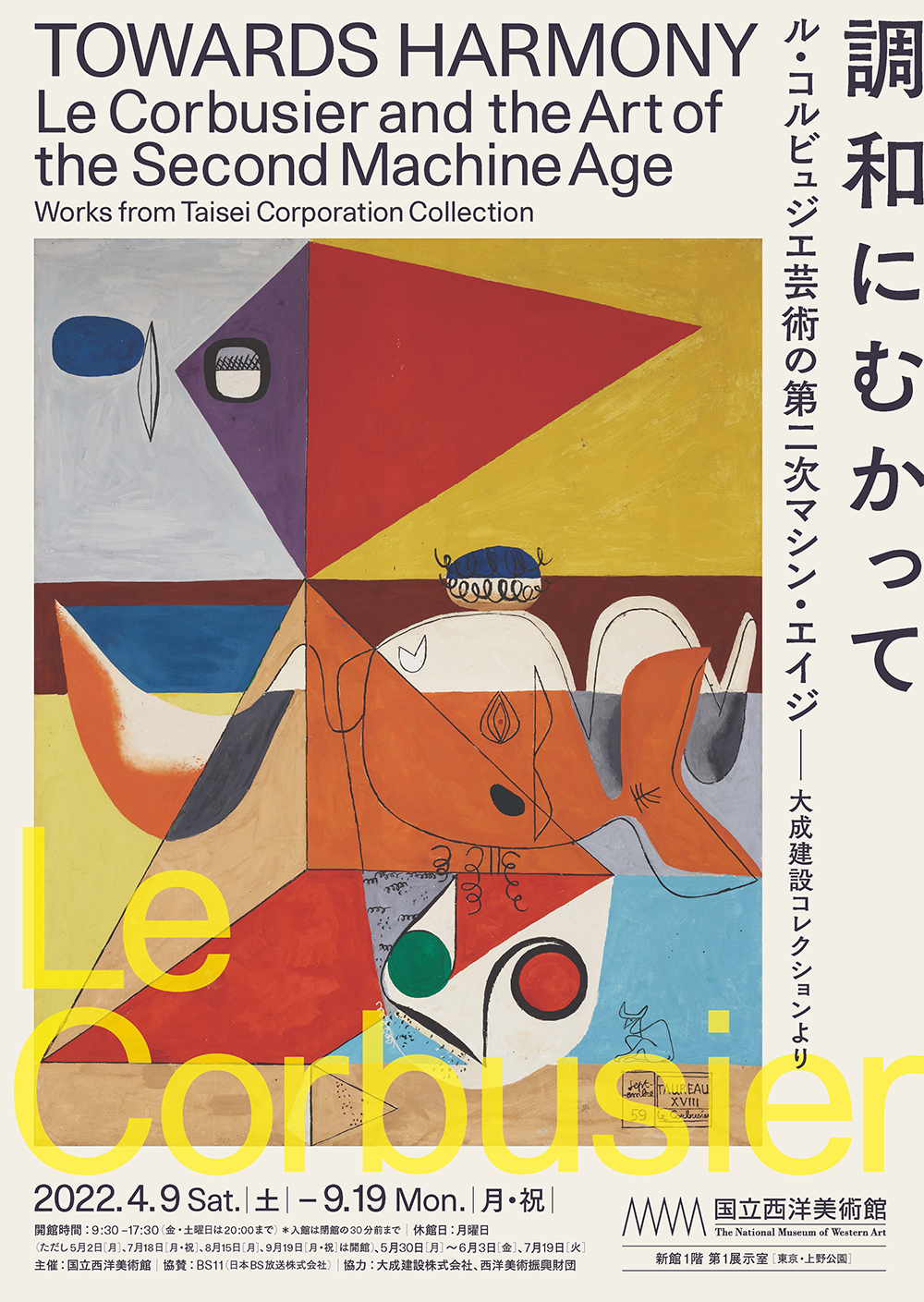Past ExhibitionsExhibition
Towards Harmony
Le Corbusier and the Art of the Second Machine Age – Works from Taisei Corporation Collection

- Dates
- Saturday, 9 April – Monday, 19 September 2022
- Hours
- 9:30 am – 5:30 pm
Fridays, Saturdays 9:30 am – 8:00 pm
Admission ends 30 mins. before closing time - Closed
- Mondays (except 2 May, 18 July, 15 August, 19 September) 30 May – 3 June, 19 July
- Venue
- Permanent Collection Gallery, New Wing
- Admission Fees
- Adults 500 yen (400 yen), College students 250 yen (200 yen)
- * Admission is free for Special Exhibition or Permanent Collection ticket holders.
- * Numbers in parentheses indicate discount fees for groups of 20 or more.
- * Free for high school students, under 18, and seniors (65 and over), Campus Members. Please show your ID upon entrance.
- * Disabled visitors admitted free of charge, with one attendant. Please present your disability identification upon arrival.
- * 18 May (Wed.) -- Free admission to the Main Building and Permanent Collection Galleries for International Museum Day.
- * 27 June (Mon.) -- Some exhibited works will be changed.
- Organized by
- The National Museum of Western Art
- With the sponsorship of
- Nippon BS Broadcasting Corporation
- With the cooperation of
- Taisei Corporation, The Western Art Foundation
The present exhibition focusses on Le Corbusier’s paintings and drawings from the last decades of his life. It is an art very different from his early phase, born out of a new environment. The destructions of WWII and the lingering threat of the Cold War had proven the inherent dangers of the First Machine Age that was characterized by the machine-idealism of the pre-war era. Although Le Corbusier continued to pursue a modernist agenda, he now started to believe that the demands of society had to be satisfied with a new sensibility for emotional and spiritual needs. The life of the people, formerly merely considered “geometric animals”, was now to be infused with poetry. It is precisely in this new intellectual environment that Le Corbusier designed the main building of the NMWA (opened in 1959), a space with which he attempted to express the new virtues of the Second Machine Age that mankind had entered.
Although with these new conceptions, Le Corbusier, the painter, developed an artistic vocabulary very different from his earlier Purist phase. From the mid-1930s onwards, forms observed in nature such as bones or shells as well as human bodies became his major subjects, often arranged according to rigid geometric composition methods. His efforts finally culminated in a realm of abstract symbols such as Open Hand and the multi-faced Taurus. Particularly the former, symbolizing mutual exchange (“open to give, open to receive”), was to become the emblem of a new era of the Second Machine Age, in which man and machine, sentiment and rationality, art and science would finally be harmonized.
Showcasing about 20 works at a time (30 total, including rotation) deposited at the NMWA from the TAISEI collection, one of the world’s most comprehensive Le Corbusier collections, the exhibition will offer unique opportunity to its visitors trace the artistic development of the French master from the mid-1930’s to his death in 1965. Among works on display are large compositions such as Bull XVIII and more than 20 rarely shown drawings, 10 at a time, which constitutes snapshots of his artistic journey.
Lastly, we would like to express our gratitude to Taisei Corporation for their generous loan of works to this exhibition. The exhibition has been curated by Robert Woitschützke (Research Fellow, The National Museum of Western Art, Tokyo).
